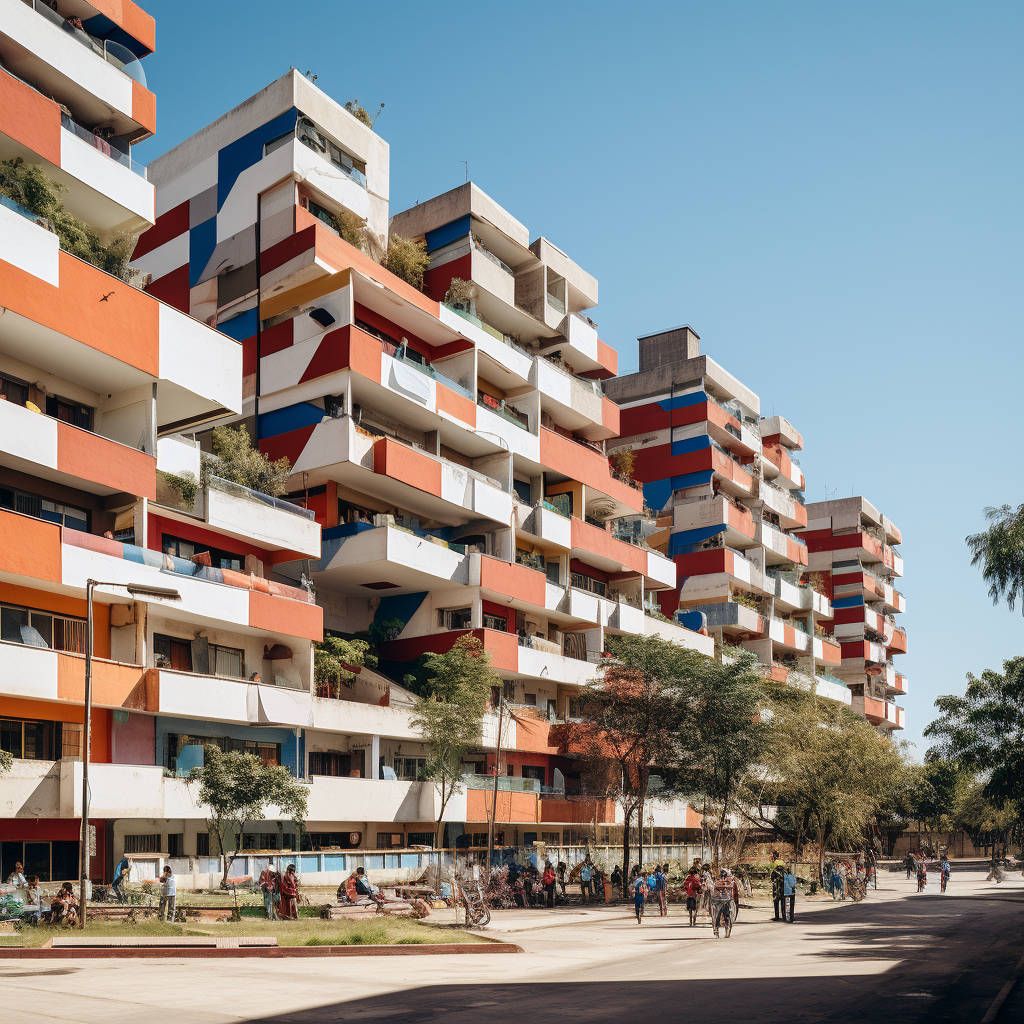Mexico City, 7/24/2038 T.A.D. – Around the world, a trend in public architecture is gaining increasing traction: converting under-used sports stadiums to public or low-income housing. The drive behind this transformation is a mix of changing climate conditions, advancements in in-home entertainment systems, and the relentless growth of the global population.
Adaptation to the changing climate has become a pressing necessity. With temperatures soaring, attending outdoor sports events has become an increasingly uncomfortable, if not dangerous, activity in some regions. This has led to a drastic downturn in live event attendance, leaving many stadiums underutilized or even abandoned. “These stadiums were built for a different era, when climate change was a distant concern, not an everyday reality,” said Dr. Jacinda Bhargava, a leading climate scientist at the Global Climate Observatory. “What we’re seeing now is a direct response to the changing conditions of our planet.”
At the same time, advancements in home viewing technologies have made the experience of watching sports events at home more immersive than ever. Leading companies like Presence AR have developed augmented reality and holography systems that make the user feel as if they’re physically present at the game. The popularity of these technologies has further driven down the demand for in-person attendance at sports events.
“Don’t get me wrong, I still love going to games,” said Paquito Acerez, a Cruz Azul season ticket holder for over 20 years who was shopping at a Presence AR demo kiosk we visited. “But with these hot summers, and the holographic projectors these guys make, it’s tempting to stay home in the A/C forever.”
Perhaps the most critical driving force behind the transformation of stadiums into housing units is the global population crisis. While the birth rate in most developed countries has stabilized or turned negative, the overall global growth rate remains positive. This growth, coupled with increasing income disparities and lack of access to home ownership, has put many nations under immense pressure to provide adequate housing for their urban poor.
In response to these converging trends, city planners and architects are seizing the opportunity to turn these massive structures into affordable housing units. The vast spaces once filled with cheering fans are being redesigned into apartments, communal areas, and green spaces.
“We see a way to help housing crises in these underutilized structures,” said Maria Gonzales, the Urban Development Minister of Brazil, another country leading the charge in this transformation. “These stadiums, once symbols of exclusion and extravagance, can become bastions of inclusivity and practicality.”
The conversion of Rio de Janeiro’s Maracanã Stadium, which once hosted the FIFA World Cup final, is one of the most ambitious projects to date. The plan includes the creation of hundreds of low-income apartments, communal gardens, and even a school.
The transformation process is not without its challenges. The stadiums’ original designs, meant to house transient crowds, are not easily adaptable for permanent living. Noise and privacy issues, as well as the need for proper sanitation facilities, are among the many obstacles architects are grappling with. “There’s a fine balance to maintain,” said renowned architect Zara Ahmed, who is leading the Maracanã project. “We need to ensure that these spaces are not just livable, but have that sense of community, of home. That’s something a lot of low-income projects struggle with.”
Despite the challenges, the overall response to the initiative has been positive. Residents of the first batch of converted stadiums have reported a significant improvement in their quality of life. “Knowing my family will have a safe, permanent home means so much,” said Diego Martinez, a new resident in one of Mexico City’s converted stadiums. “I think this idea, if done right, could help many people who have been left behind or forgotten.”
Reporting for Future News, this is Manuel Santiago in Mexico City.
